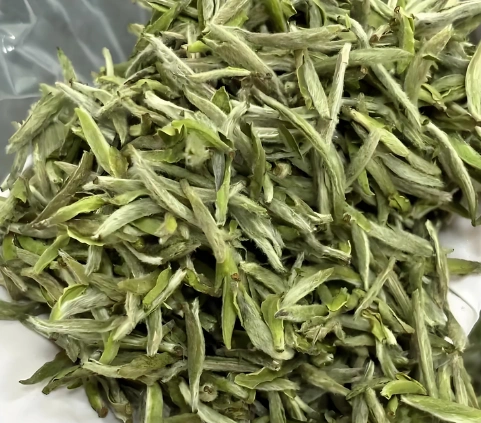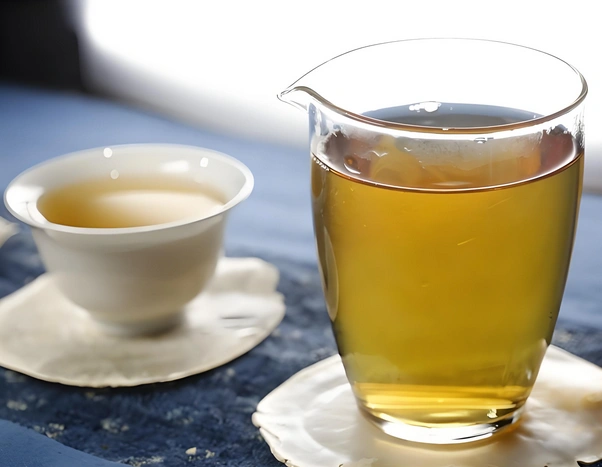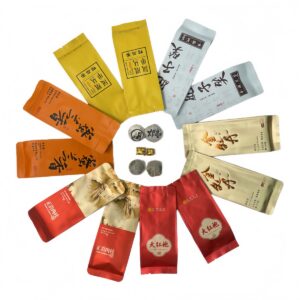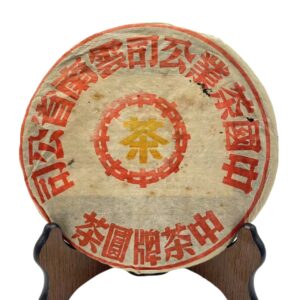Fuding white tea greets your senses with a whisper of spring’s first light—silvery buds unfurling to release a delicate floral perfume, honeyed sweetness, and a soft mineral undertone. Born in Fujian’s mist-shrouded hills, this rare white tea embodies centuries of artisan care and pure simplicity, unlike any other leaf. Whether you crave the rare purity of Silver Needle white tea, the round body of White Peony tea (Bai Mudan), or the robust charm of Shou Mei white tea, understanding Fuding’s legacy will deepen every cup you brew.
This guide will journey through its storied origins, signature varietals, nuanced flavor profiles, healthful antioxidants, meticulous processing, and expert brewing techniques—inviting you to embrace Fuding white tea as both daily ritual and refined indulgence.

Origins and History of Fuding White Tea
High in Fujian’s northeast corner lies Fuding County, where ancient tea trees cling to granite slopes and morning mists cradle every leaf. Legend credits Buddhist monks of the Song dynasty with first discovering the silvery buds, which local farmers carefully harvested by hand. Over centuries, Fuding’s white teas evolved from humble local treasure to global phenomenon—celebrated at imperial courts, traded along the Maritime Silk Road, and now cherished by tea connoisseurs worldwide.
Key Varietals of Fuding White Tea
Silver Needle White Tea (Baihao Yinzhen)
The pinnacle of Fuding’s harvest, Silver Needle white tea uses only the youngest silver-tipped buds. Each needle-shaped leaf yields a pale, translucent infusion exuding orchid and chamomile notes. Its rarity and sublime purity command top price—but its ethereal elegance rewards the patient sipper.
White Peony Tea (Bai Mudan)
White Peony tea combines one bud with two tender leaves. The result is a fuller-bodied brew: honeyed sweetness underpinned by soft floral layers. Bai Mudan balances richness with delicate aroma, making it ideal for those transitioning from green to white teas.
Shou Mei White Tea
Harvested later in the season, Shou Mei white tea uses more mature leaves and occasional buds. Its darker infusion carries toasted almond and dried fruit accents, offering a robust, earthy style that stands up to multiple steeps.

Flavor Profile & Tasting Notes
Across varietals, Fuding white teas share a core elegance:
- First Sip: Subtle orchard blossoms and lily petals.
- Mid-Palate: Warm honey, sweet melon, or almond.
- Finish: Whispered minerality—slate or river stone.
Picking date and varietal shift these notes: early-spring Silver Needle leans floral, while Shou Mei’s late-harvest depth reveals toasted, amber warmth.
Health Benefits of Fuding White Tea Antioxidants
White teas stand out for minimal processing, preserving tea polyphenols—key antioxidants that:
- Support Skin Health: Combat free radicals for a radiant complexion.
- Boost Immune Function: Gentle catechins help fortify defenses.
- Provide a Gentle Lift: Low caffeine offers clarity without jitters.
Embrace a daily cup to nurture body and mind.
Processing, Grading & Industry Standards
Fuding white tea’s hallmark is its simplicity. After plucking:
- Withering: Leaves spread under gentle sun or breeze.
- Drying: Low-temperature ovens halt oxidation.
- Minimal Handling: No rolling or firing to preserve bud integrity.
Government standards define harvest windows (early April for Silver Needle; late April–May for White Peony; June for Shou Mei) and grades based on bud-to-leaf ratio, ensuring consistency and authenticity.
Brewing Fuding White Tea for Maximum Flavor
Western-Style
- Water Temperature: 75–85 °C (167–185 °F)
- Leaf Ratio: 2 g per 150 ml water
- Steep Time: 2–3 minutes
Gongfu-Style
- Water Temperature: 80–90 °C (176–194 °F)
- Leaf Ratio: 5–6 g per 100 ml
- Steep Times: 10–15 s, increasing by 5 s each infusion; up to 6 brews
Rinse leaves briefly to awaken aroma, then savor each infusion’s evolution from bright florals to sweet mid-tones.

🔗 For more tea brewing methods, check out the YouTube video explaining the brewing methods.
Incorporating Fuding White Tea into Daily Rituals
- Morning Clarity: Brew Silver Needle to gently ignite your senses.
- Afternoon Pause: Sip White Peony as a calming interlude in busy days.
- Evening Wind-Down: Choose light-steeped Shou Mei to relax without disrupting sleep.
Pair with light pastries or fresh fruit to complement its nuanced sweetness.
Selecting & Storing Quality Fuding White Tea
Selecting
- Appearance: Silvery hairs on buds (Silver Needle) or evenly unbroken leaves (Bai Mudan).
- Aroma: Fresh hay, honey, and slight floral top notes.
- Source Labels: Genuine Fuding teas carry region and grade markings.
Storing
Keep in airtight, opaque containers in a cool, dry place. Proper storage preserves fragrance for up to 12 months.
FAQs About Fuding White Tea
- How does Silver Needle differ from White Peony?
Silver Needle is plush buds only; White Peony includes leaves for fuller body. - What makes Shou Mei unique?
Mature leaves yield deeper, toasty notes and earthy sweetness. - Can I brew leaves multiple times?
Yes—quality Fuding white teas offer 3–5 steeps, each subtly evolving.
Conclusion: Embrace the Elegance of Fuding White Tea
From the misty hills of Fuding to your teacup, Fuding white tea embodies purity, subtlety, and centuries of tradition. Whether you choose the rarefied elegance of Silver Needle, the balanced richness of White Peony, or the hearty warmth of Shou Mei, each variety invites you into a world of delicate aroma and gentle vitality. Brew with care, sip with presence, and let Fuding white tea illuminate your daily rituals with its quiet, luminous charm.



